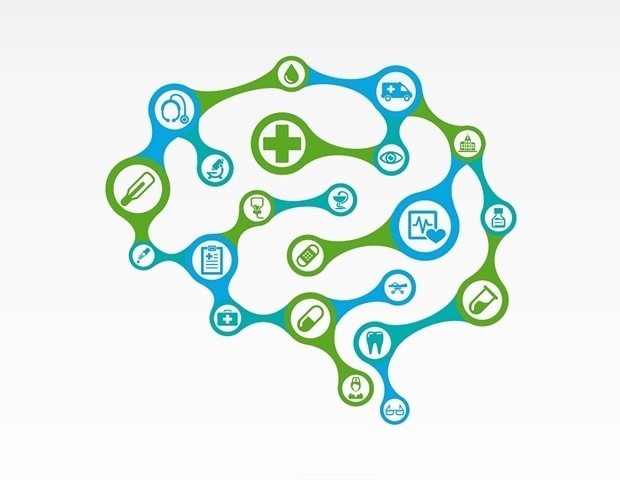In a recent study published in The Lancet Regional Health, researchers evaluate the effectiveness of commonly prescribed antibiotics for treating severe bacterial infections in children in Southeast Asia and the Pacific using a Bayesian Weighted Incidence Syndromic Combination Antibiogram (WISCA) model.
 Study: Coverage gaps in empiric antibiotic regimens used to treat serious bacterial infections in neonates and children in Southeast Asia and the Pacific. Image Credit: Summer 1810 / Shutterstock.com
Study: Coverage gaps in empiric antibiotic regimens used to treat serious bacterial infections in neonates and children in Southeast Asia and the Pacific. Image Credit: Summer 1810 / Shutterstock.com
Background
Antimicrobial resistance (AMR) is a significant threat to global health, especially for the vulnerable pediatric population. Newborns are at a higher risk, with sepsis contributing to a substantial number of AMR-related fatalities, and most of these deaths occur in low- and middle-income countries (LMICs).
Nevertheless, detailed data on infection rates and resistance patterns in LMICs, particularly in Asia, remains sparse. Challenges like culture-negative bacterial infections make targeted treatments challenging, thus increasing reliance on empirical antibiotics.
WISCA has been introduced to better determine antibiotic coverage for specific syndromes by considering prevalent bacteria and their resistance patterns. However, further research is needed, as empirical antibiotic regimens based on global policies may not adequately address the specific bacterial pathogens and evolving rates of AMR in Southeast Asia and the Pacific, which may lead to ineffective treatments and increased mortality in children.
About the study
Between January and August 2021, a systematic literature search was performed across PubMed, Global Health, OVID MEDLINE, and EMBASE databases. The search focused on regions defined by the WHO in the Western Pacific Regional Office (WPRO) and South-East Asia Regional Office (SEARO) areas, excluding high-income nations according to the World Bank classification. Only studies from 2011 to 2021 were considered.
Two reviewers independently screened titles and abstracts for inclusion, with disagreements addressed by a third party. The Grades of Recommendation, Assessment, Development, and Evaluation (GRADE) and Microbiology Investigation Criteria for Reporting Objectively (MICRO) frameworks helped assess the quality of evidence.
Bacterial pathogens pertinent to neonatal and pediatric bloodstream infections (BSIs) and meningitis were analyzed, with an emphasis on bacteria with rising AMR issues. Three regimens, including aminopenicillins and gentamicin, which the WHO recommends for neonatal sepsis, non-antipseudomonal third-generation cephalosporins for neonatal meningitis and pediatric sepsis, and carbapenems like meropenem were assessed. Bacteria with known intrinsic resistance to certain drugs were flagged accordingly.
The WISCA approach was employed, using Bayesian models to assess the causative pathogens’ distribution and bacterial susceptibility. This technique provided insights into coverage by different antibiotic classifications.
Study findings
The systematic review gathered information from 151 publications representing 11 countries across WHO-defined Southeast Asia and Western Pacific Regions. However, 65 publications that focused solely on one pathogen were excluded to reduce bias. Ultimately, data from 86 publications were utilized, spanning 1990 to 2019. These studies covered various clinical contexts, with only one focusing on a rural population.
Nine of the papers studied only hospital-acquired infections, whereas 46 papers specifically examined neonatal sepsis. The quality of these papers varied, with only one achieving the GRADE level A designation.
In terms of causative pathogens, neonatal sepsis/meningitis was predominantly due to Klebsiella spp. and Escherichia coli in 39% and 27% of cases, respectively. Streptococcus agalactiae was reported in 1% of cases.
In pediatric sepsis, E. coli, Staphylococcus aureus, and Streptococcus pneumoniae were frequent pathogens in 26%, 20%, and 13% of cases, respectively. The profile of pathogens in pediatric meningitis was somewhat similar, with S. pneumoniae being the leading cause in older children, followed by E. coli at 43% and 27%, respectively.
Certain pathogens were predominantly reported in specific countries. For example, 32% of all E. coli isolates originated from studies performed in China, whereas 33% of all Klebsiella spp. isolates were based on Indian studies. Susceptibility assessment was not uniform across all studies but was often inferred in line with standard microbiological processes.
Syndrome-specific estimates for coverage were provided and determined by adjusting the susceptibility estimates according to the proportional influence of pathogens on the syndrome. For neonatal sepsis and meningitis, coverage estimates included aminopenicillins at 26%, gentamicin at 45%, cefotaxime/ceftriaxone at 29%, and carbapenems at 81%.
In pediatric sepsis, coverage rates included aminopenicillins at 37%, gentamicin at 39%, cefotaxime/ceftriaxone at 51%, and carbapenems at 83%. For pediatric meningitis, the coverage was estimated to be aminopenicillins, gentamicin, cefotaxime/ceftriaxone, and carbapenems in 62%, 21%, 65%, and 79% of cases, respectively.
This data provides a comprehensive overview of the microbial landscape in these regions, thus providing important insights into the dominant pathogens and their susceptibility to various antimicrobial agents.
Conclusions
The current study analyzed empirical antibiotic regimens for neonatal and pediatric sepsis or meningitis in the Asia-Pacific region, revealing alarming rates of non-susceptibility to currently recommended treatments. The data, primarily obtained from urban hospital settings in countries like India and China, indicates carbapenems provide optimal coverage. However, the overuse of these agents could facilitate AMR, thus emphasizing the need for region-specific treatment guidelines and more robust data, especially from underrepresented areas.
The study findings question the effectiveness of current WHO-recommended regimens. Thus, there remains an urgent need to optimize antimicrobial stewardship and develop new treatments for multi-drug resistant (MDR) infections in children.
Journal reference:
- Williams, P. C. M., Jones, M., Snelling, T. L., et al. (2023). Coverage gaps in empiric antibiotic regimens used to treat serious bacterial infections in neonates and children in Southeast Asia and the Pacific. The Lancet Regional Health. doi:10.1016/j.lansea.2023.100291

 PARENTING TIPS
PARENTING TIPS PREGNANCY
PREGNANCY BABY CARE
BABY CARE TODDLERS
TODDLERS TEENS
TEENS HEALTH CARE
HEALTH CARE ACTIVITIES & CRAFTS
ACTIVITIES & CRAFTS

